This post is also available in: French
3 days in Reykjavik is the perfect introduction to Iceland, with plenty of time to travel the Golden Circle, go whale watching, and explore the capital city in depth. This detailed 3 day Iceland itinerary will show you how!
There is no other place on Earth like Iceland, the land of fire and ice.It is clear to see why its scenery can so often be found in films set on other planets, with moss-covered lava fields stretching as far as the eye can see and scattered plumes of steam rising from the black, rocky ground. Its volcanoes and glaciers mean that from the moment you first step foot in Iceland, you’ll be captivated by the landscape.
Iceland’s capital, Reykjavík, is cool, vibrant and interesting. It is unlike any other city in Europe and, while it may be small, it is distinctly cutting edge and brimming with culture. Translated as “smoky bay”, Reykjavík is believed to have been the first permanent settlement in Iceland, when the Norsemen made the treacherous journey in AD 874, although the urban feel it has today didn’t begin to emerge until the 19th century.
Disclaimer: This post contains affiliate links. This means that should you click on certain links, and then subsequently purchase a product, I will receive a small commission.
Table of Contents
How Many Days Do You Need In Reykjavík?
Here’s the thing about Reykjavík – you can see most of the city itself in a day or so. The funky capital of Iceland is home to some interesting museums and makes a great introduction to the country. But as I shared in my one day in Reykjavík itinerary, you can see most of the attractions in a day.
So why spend 3 (or more) days in Reykjavik?
Because it makes the perfect base for a short trip to Iceland. If you make Reykjavik your base for 3 days in Iceland, you’ll be able to take day trips to some of the most prominent attractions, like the Golden Circle, without worrying about transportation around the country.
3 days in Reykjavik is just the perfect amount of time for a long weekend getaway in Iceland, that will allow you to explore the fun and funky city and see some of Iceland’s natural wonders.
How to Spend 3 Days in Iceland
This 3 day Reykjavik itinerary shows you not only the best of Iceland’s hip, modern city but some of the most famous sites of Iceland in just 3 days.
3 days in Reykjavík: Day one
Kickstart your trip to Iceland by getting out and exploring its unique landscape with the Golden Circle Tour. This is a classic tourist day trip, but with good reason, as you get to not only experience the stunning Icelandic landscape but to learn about the county’s history and geology.
The Golden Circle tour is a full day trip out of Reykjavik, so make sure you pack your waterproof coat (if only to protect you from the wind, which is a given on a treeless island in the middle of the North Atlantic).
You might be interested in: What to wear on your trip to Iceland.
Þingvellir National Park
The first stop on the Golden Circle tour is Þingvellir national park, a UNESCO World Heritage site with great historical, cultural and geological significance and a must-see for anyone visiting Iceland. The park lies 40km north-east of Reykjavík and was the home of Iceland’s parliament (Alþhingi), one of the world’s oldest parliaments, from the 10th to the 18th century. Standing at the base of the imposing rocks, it is an amazing feeling to imagine the Vikings gathered in the very same spot centuries before, holding a parliamentary meeting.
Aside from its astonishing history, Þingvellir is also known for its unusual geology as it is here where the North American and Eurasian tectonic plates meet in a rift valley. Here you can look across the otherworldly landscape, full of cracks and faults in the ground caused by the plates moving apart from each other. The plates move at around 2cm every year, meaning the landscape is constantly evolving.
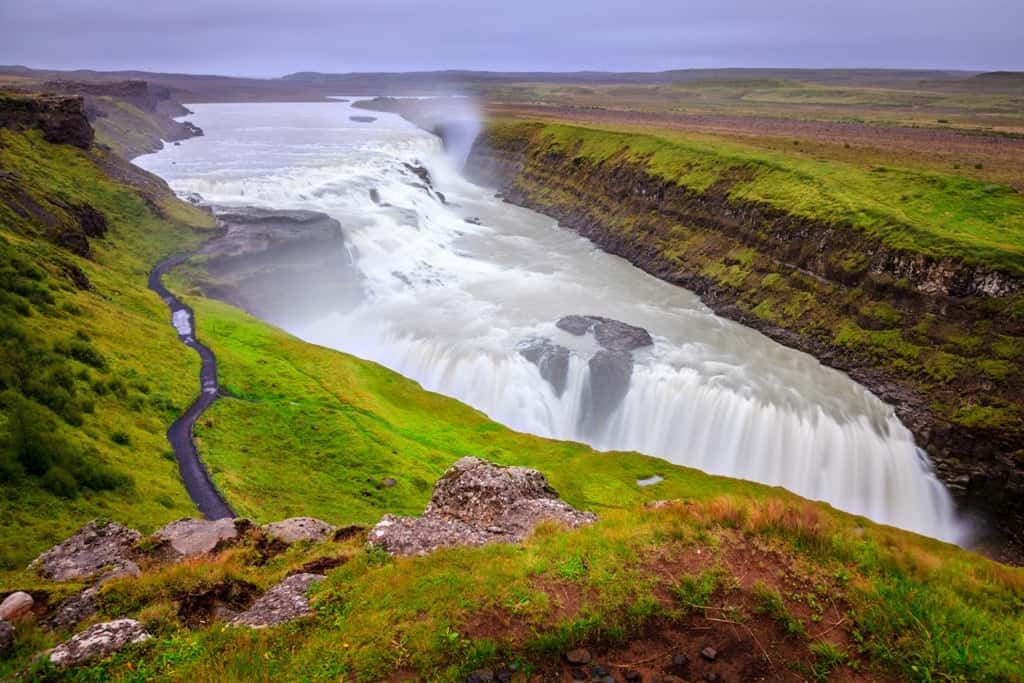
Gullfoss
Gullfoss (meaning golden waterfall) is one of Iceland’s most famous waterfalls. At 32m high, comprised of two steps, curving round into the deep Gullfossgjúfur canyon below, it is a truly impressive sight. The Hvítá river, which flows into Gullfoss from the glacier lake Hvítávatnat Lángjökull glacier, transports over 100 cubic meters of water down the waterfall every second, ensuring a spectacular show of nature’s raw power, regardless of what time of year you visit.
Geysir geothermal area
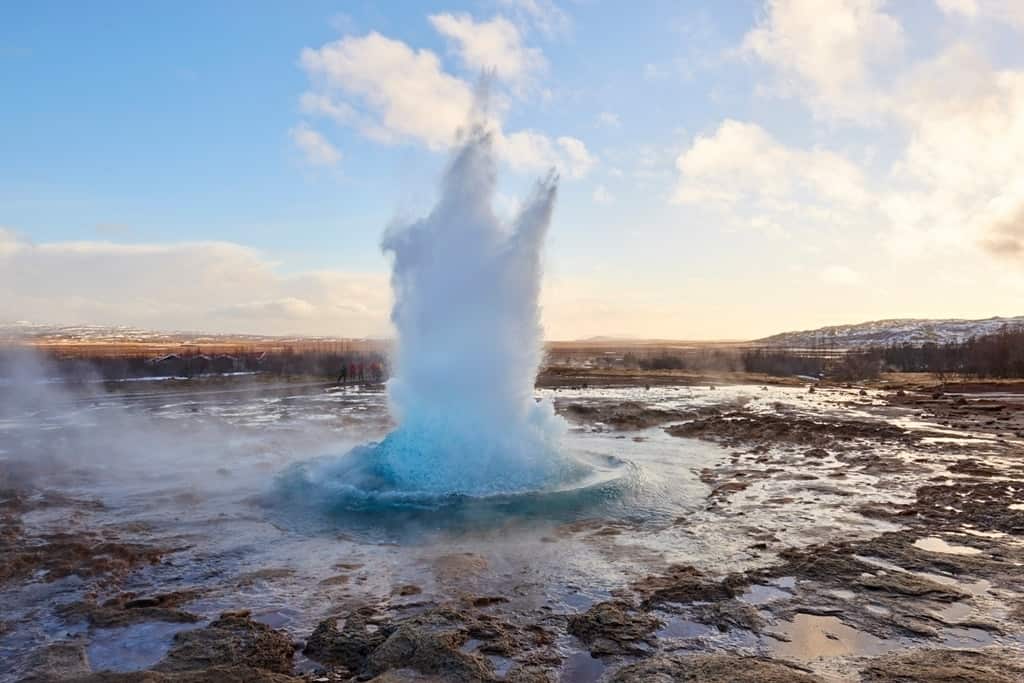
The third stop on the Golden Circle tour is the Geysir geothermal area and really is not to be missed. At a first glance, it might just look like some rocks and pools of water, but this is where you will find Geysir, the first geyser ever to be recorded in print and after which the word “geyser” comes from. While Geysir can go many years without erupting, nearby Strokkur erupts every five to ten minutes, thrusting a powerful jet of boiling water up to 30 meters into the air, a sight you can’t leave Iceland without seeing.
If you take the Golden Circle bus tour you will also be able to wonder at Iceland’s strange landscape as you drive around. Be sure to get the window seat and don’t forget to count how many waterfalls you see on the way.
Click here for more information and to book a golden circle tour.
3 days in Reykjavík: Day two
Whale watching
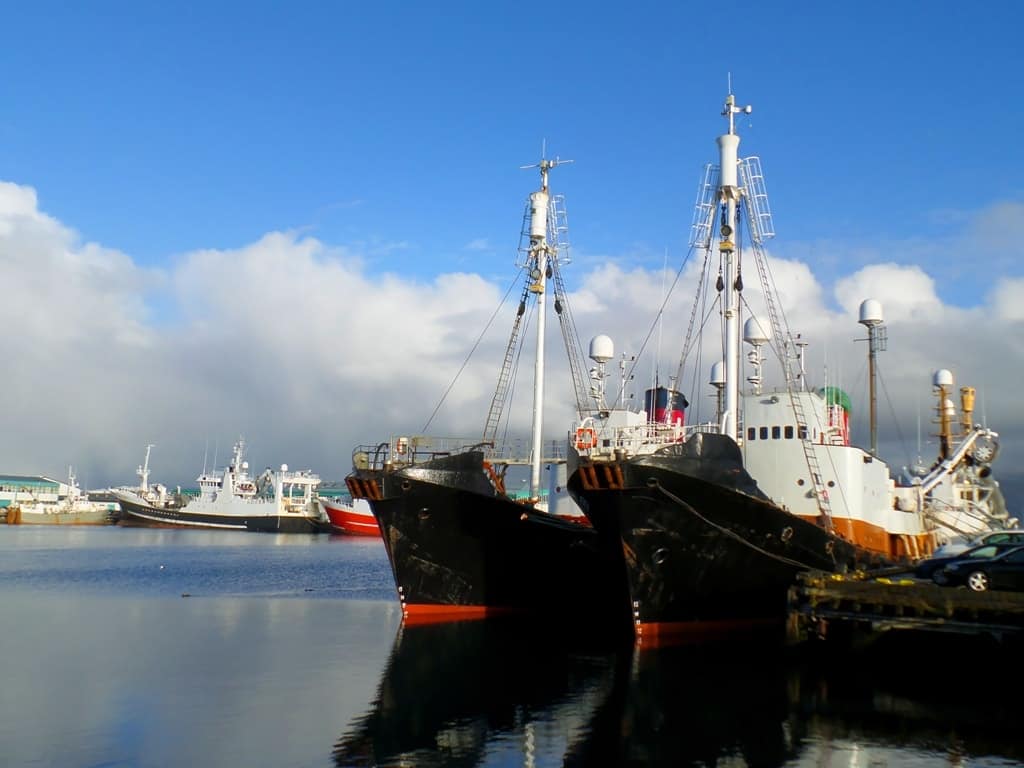
Whale watching tours are available all year round, leaving from Reykjavík harbor, and are a great fun way to not only see some whales and dolphins but just to get out on the open sea and enjoy the views of the mountains that overlook the city. There are several different tours you can take depending on the time of year, but they usually last a few hours, or longer if you decide to combine your whale watching with another activity, such as puffin watching. In the summer you can even take a trip in the evening, taking advantage of the long daylight hours (the sun sets at around midnight in mid-June) when it is possible to see mink whales, white-beaked dolphins, harbor porpoises and humpback whales. In the winter it is humpback whales, killer whales/orcas, white-beaked dolphins and harbor porpoises that can be seen in the ocean around Reykjavík.
Click here for more information and to book the tour.
Warm overalls are usually provided, but make sure to wear sensible warm clothing, particularly in the winter months. Whale sightings aren’t guaranteed, but tour operators usually give you a free ticket for a second tour if you’re unlucky the first time, and the boat trip is a fun experience in itself.
Visit some out-of-the-ordinary museums
Iceland is known for being a little bit quirky, and while there are many of the kinds of museums you would expect from a capital city, such as the National Gallery of Iceland and the National Museum of Iceland, why not embrace some weirdness and visit some of the more out-of-the-ordinary museums.
Whales of Iceland Exhibition
After you’ve finished whale watching you can learn more about these majestic creatures at Whales of Iceland. As well as learning more about whales and their habitat, the exhibition contains 23 life-sized models of types of whales you can expect to find in the ocean around Iceland.
Location: Fiskislóð 23-25, 101 Reykjavík
Opening hours: 10am-5pm
Tickets: ISK 3,400 for one adult
Icelandic Phallological Museum
The Icelandic Phallological museum, is home to a collection of more than 215 penises belonging to most of the types of mammals that can be found in Iceland. This is also a great place to pick up a souvenir if you’re looking for something different to the usual magnets and cuddly puffin toys.
Location: Laugavegur 116, 105 Reykjavík
Opening hours: 10am-6pm (opens 9 am June to August).
Tickets: ISK 2,500 for one adult
Icelandic Punk Museum
If you’re interested in learning more about the history of Iceland’s thriving music scene then you can head over to the Icelandic Punk Museum. Located in a former public toilet, you will find memorabilia from the Icelandic punk scene of the 80s and 90s and get a feel for how it all began for some Iceland’s most famous musicians.
Location: Bankastræti 0, 101 Reykjavík
Opening hours: 10am-10pm (opens 12pm on weekends)
Tickets: ISK 1,000 for one adult
Once you’re done emerging yourself in the stranger side of Icelandic culture you can get out and explore the city itself. There are walking tours you can take if you’re interested in learning more about the history and culture of Reykjavík, however, it’s also very easy to explore on your own as the city is relatively small.
Some key highlights are:
Hallgrímskirkja (church)
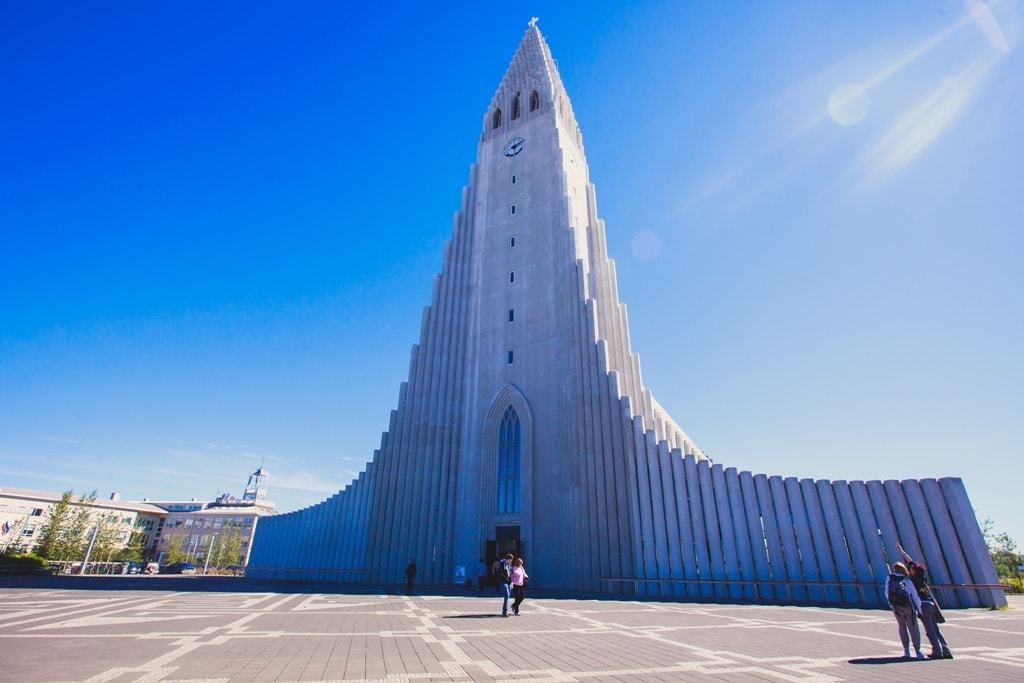
Standing at 74m high, this Lutheran church is one of the tallest buildings in Iceland and one ofReykjavík’s main landmarks, not to mention, top tourist attraction. The design is said to be based on Iceland’s rocky landscape. As well as an impressive pipe organ and a fine statue of Leif Eriksson, generally believed to be the first European to discover America, you will also find a viewing tower, which looks out over the whole of Reykjavík and down across the ocean. It is from the top of the tower where you can take the iconic photo looking down on the city’s brightly-colored roofs, a familiar image for anyone who has ever googled “Reykjavík”.
Location: Hallgrímstorg 1, 101 Reykjavík
Opening hours: 9am-9pm (closes at 5 pm October to April). The tower closes half an hour before the church and is also closed on Sundays from 10.30-12.15 during mass.
Tickets for the tower: ISK 1,000 for one adult (admission into the church is free)
Sun Voyager sculpture and Harpa Concert Hall
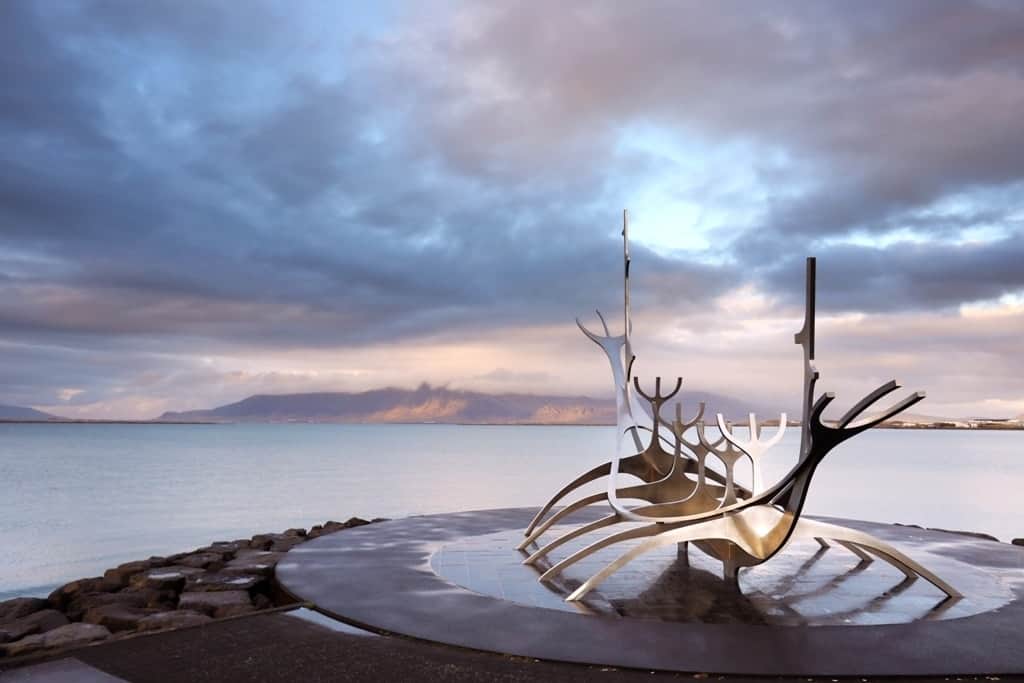
One of the nicest things to do in Reykjavík is simply to walk along the coastal path, looking out across the water to Mount Esja, which forms Reykjavík’s dramatic backdrop. On route you will come across the Sun Voyager (Sólfar), a stainless-steel sculpture of a ship by Jón Gunnar Árnason, completed in 1990, one year after his death, and symbolizing the promise of something new, hope, progress, and freedom.
Another Reykjavík landmark to be found along the shore, by the harbor, is the Harpa Concert Hall and Conference Centre. This unmissable building, with its award-winning architecture, is Reykjavík’s cultural center. There are frequent events going on here; you can take a guided tour of the building, enjoy a concert, visit one of its bars or restaurants, or browse the shop’s range of books, gifts, music and Nordic design.
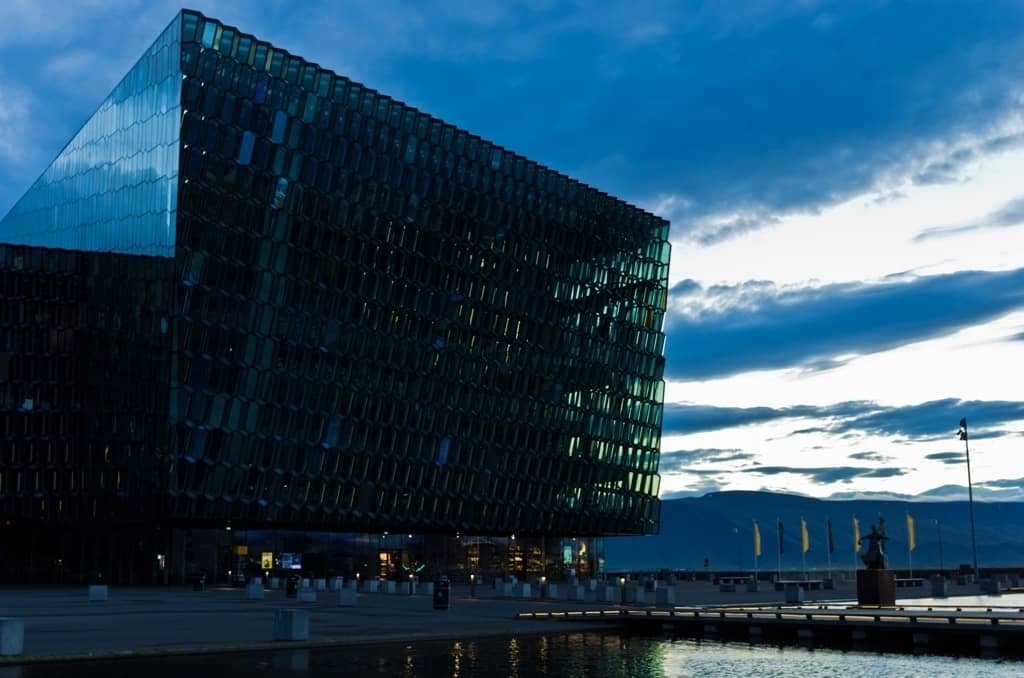
Reykjavík City Pond
While exploring the city you should make sure to drop by the Reykjavík city pond (known locally as Tjörnin, meaning pond in Icelandic). The pond is a popular place for both locals and tourists due to its great views and surrounding parks. By the edge of the pond you will find a park full of sculptures and also many landmark buildings such as the Reykjavík City Hall, Parliament Building, Free Church of Reykjavík and National Gallery of Iceland, making it the perfect place to relax and enjoy the view as well as take in some of the city’s main sights.
3 days in Reykjavik: Day three
Horse riding
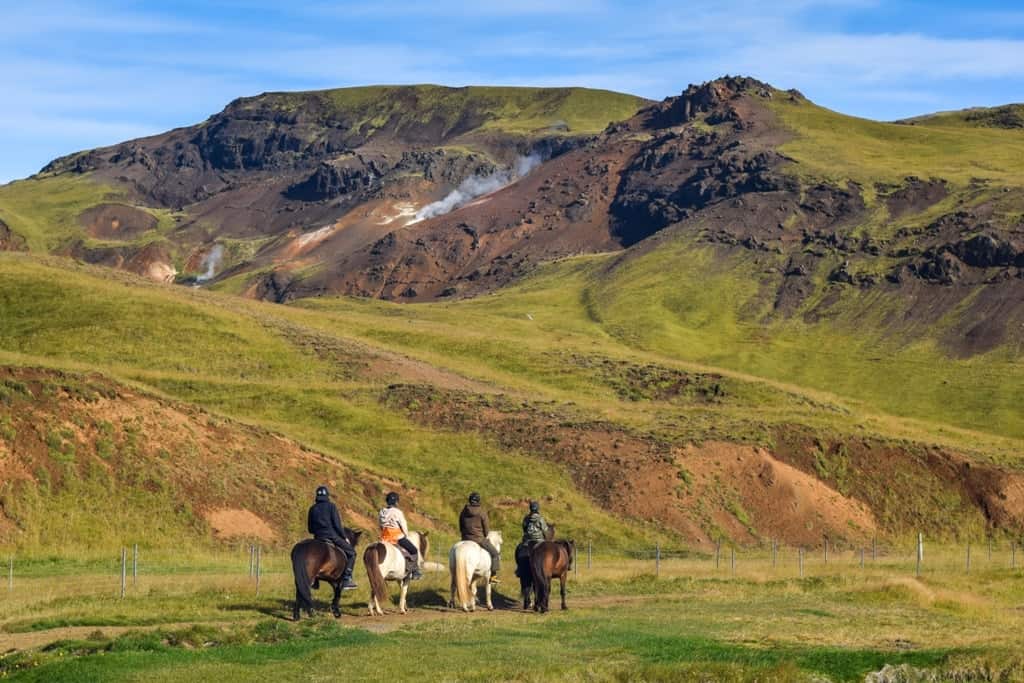
Iceland is famed for its Icelandic horses (most definitely not to be confused with ponies, despite their small size). This unique breed is developed from the horses taken to Iceland by Norse settlers in the 9th and 10th centuries and is a strong part of Icelandic history. So there is no better way to explore Iceland’s lava fields than with a trek on an Icelandic horse. There are tours of different lengths for beginners and experienced riders, just bear in mind not to bring anything with you that has been in contact with horses outside of Iceland, as this is necessary to prevent the spread of disease to the Icelandic horse.
Click here for more information and to book a horse riding tour in lava fields.
Blue Lagoon
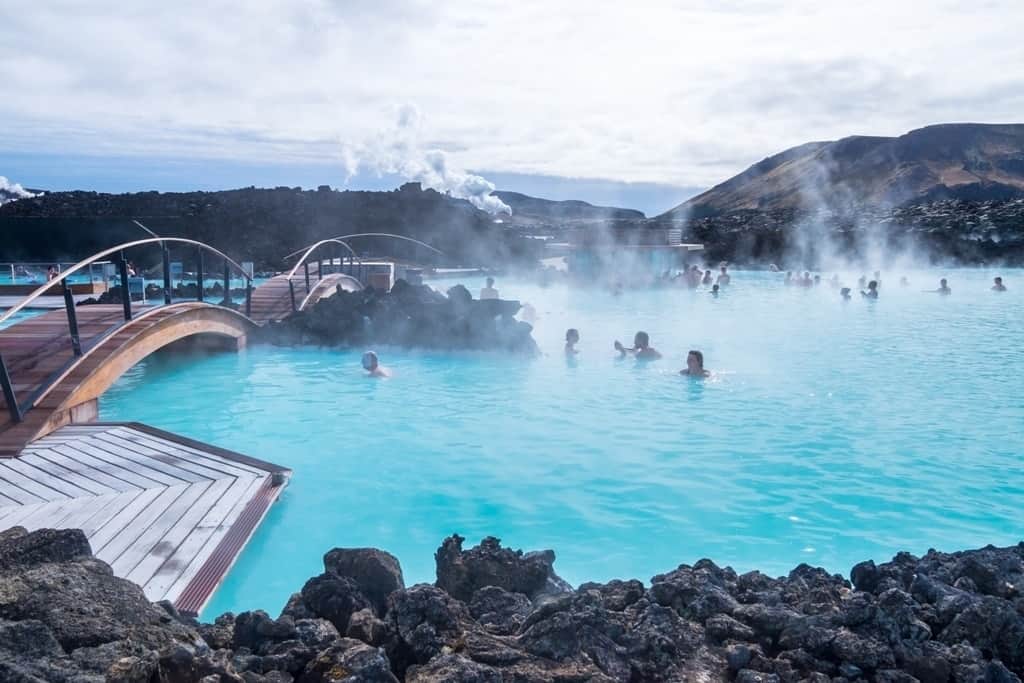
After all that horse riding, what better way to relax than in one of Iceland’s famous hot springs? There are many places you can go for a dip, however the most famous of them all is the Blue Lagoon geothermal spa. Located in the middle of a lava field, it’s worth going just to see the beautiful contrast of the pitch black lava field against the brilliant blue waters of the lagoon. The temperature of the water in the lagoon is just below 40˚C and is rich in minerals that are said to be beneficial for some skin ailments.
As well as enjoying your time soaking in the lagoon, there are many spa treatments you can book and there is also the Lava restaurant, offering gourmet meals in a dining room built into an 800-year old lava cave overlooking the lagoon. Don’t forget to save time to pop into the shop to buy your Blue Lagoon spa products, such as the silica mud mask, so you can recreate that Blue Lagoon spa feeling once you’re back home.
Located between Reykjavík and Keflavík, it is possible to stop off at the Blue Lagoon on your way to or from the airport, if you have the time. There are several tour operators that provide this service.
Tickets for the Blue Lagoon should be booked in advance via the website. Entrance costs from ISK 8,990.
Alternatively, you can combine a visit to the Blue Lagoon with a golden circle tour click here for more information.
Can You See The Northern Lights from Reykjavik?
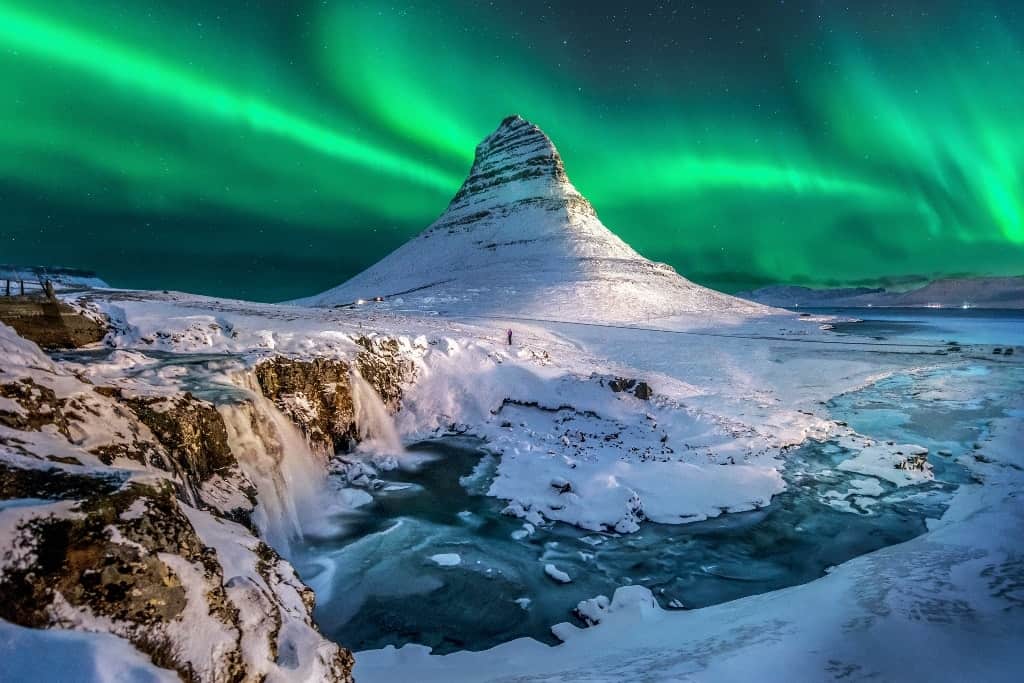
It’s no secret that many people travel to Iceland just for their chance of seeing the famous northern lights. But can you see this phenomenon from Reykjavik?
From September to March you may have the opportunity to see the Northern Lights from Reykjavík (depending on the weather of course!). While it is possible to see them from the city, you have the best chance if you escape the city lights.
One of the easiest ways to do this is by booking a Northern Lights tour, as tour operators keep in touch with each other and will know the best places to try and catch a glimpse. Tours only go ahead if guides think there is a chance of seeing the lights, so if the tour doesn’t happen you don’t need to pay.
For this reason, if you have your heart set on seeing the Aurora, I would highly recommend booking a tour for the first night you arrive for your 3 nights in Reykjavik. Then, if the tour doesn’t go ahead that night you can still book for future nights, giving yourself a better chance of seeing this spectacular phenomenon.
Click here for more information and to book a tour.
How to Get Around Iceland in 3 Days
The easiest way to see the sights surrounding Reykjavík in a short time is by booking organized tours. Thanks to the thriving tourism industry there are many different tour companies to choose from and many different variations of the same tours. Some companies also offer smaller, more personal tours, although these tend to be more expensive than the larger, coach tours. If in doubt about which company to choose, you can always ask your hotel for recommendations or to help you book your trips. It is usually also possible to combine two tours, e.g. the Golden Circle tour and horse riding.
Where to eat in Reykjavík, Iceland
Hotdogs at Bæjarins Beztu
The most famous hot dog stand in Iceland is an institution. Founded in 1937 it predates many of Reykjavík’s other tourist attractions and has even had several celebrity visitors, from Bill Clinton to Metallica’s James Hetfield. These days Bæjarins Beztu is a staple of any Reykjavík travel guide, so don’t miss out.
Dill is the first and only restaurant In Iceland to have been awarded a Michelin star. The restaurant offers Nordic cuisine, made with fresh Icelandic ingredients. The perfect place to get a luxury taste of Iceland. Make sure you book well in advance (several months) as Dill is quite small and demand is high!
Tucked away by the harbor you will find Höfnin (which literally means “The Harbour”), a great seafood restaurant with a warm and cozy atmosphere. Not only will you get great food here, but it also has a fantastic view over the harbor as it couldn’t be closer to the water’s edge. Höfnin serves traditional Icelandic food with a modern twist; the shellfish soup is particularly popular.
Matur https://www.maturogdrykkur.is/og Drykkur
Another restaurant serving classic Icelandic cuisine with a modern twist is Matur og Drykkur (translated as food and drink). Here you can try some of the more quirky and outlandish Icelandic foods without being disgusted, as the chefs at Matur og Drykkur really know how to make literally anything taste good.
If you need a break from eating Icelandic food, you can get some of Reykjavík’s best pizza at Hverfisgata 12. Its cool, cozy and rustic atmosphere is the perfect place to enjoy a few beers or grab a cocktail; a popular place with both locals and tourists.
Where to stay in Reykjavík
The tourism industry is booming in Reykjavík so there’s no shortage of places to stay, just make sure you book well in advance to avoid a hefty price. All the suggested hotels, apartments and hostels are located in Reykjavík’s central 101 district.
Reykjavík’s first design hotel, 101 hotel, offers everything you could need for a luxury city break. Aside from its very cool décor, the elegant hotel also boasts its own art collection, showcasing pieces by a range of Icelandic artists. The hotel also offers a gym and spa with a steam bath and Jacuzzi, with in-room spa treatments available. 101 Hotel is also home to fashionable-yet-casual restaurant Kitchen and Wine, which offers Icelandic and international cuisine.
Click here for more information and to check the latest prices.
If you would like a hotel with all the amenities and a great view, then look no further than the CentreHotel Arnarhvoll. The hotel boasts a wellness center with a hot tub and sauna and many of the rooms have fantastic views of the sea and mountains. Although not to worry if your room doesn’t, as you can always head up to the Sky Restaurant and Bar on the top floor to be guaranteed a spectacular view of Reykjavík as well as a range of cocktails inspired by the surrounding mountains, called “mountails”.
Click here for more information and to check the latest prices.
This charming hotel located in a historic building dating back to 1900 offers boutique apartments with fully-equipped kitchenettes and claims the largest hotel rooms in Reykjavík. Kvosin is also dedicated to supporting local artists and you can find pieces specially designed for the hotel as you look around. Kvosin has a bar next door, called Klaustur bar, where you will find a great selection of wines, whiskeys and gins that can only be found in Iceland. If you’re a fan of gin and tonic, you should look at their special gin menu.
Click here for more information and to check the latest prices.
For more affordable, but still centrally located accommodation, try Apartment K, which has a series of apartments scattered around downtown Reykjavík. All of the apartments have a boutique-hotel feel about them and include modern kitchen facilities, enabling you to save money on eating out while still living in style.
Click here for more information and to check the latest prices.
Located in an old biscuit factory (hence the name Kex, which means biscuit in Icelandic) in downtown Reykjavík, this trendy hostel is a mixture of vintage and contemporary and home to a popular bar and gastropub. After a hard day of sightseeing, you can relax in the lounge area and delve into the eclectic selection of books in the cozy reading corner.
Click here for more information and to check the latest prices.
How to Reykjavik from the Airport
Keflavík airport is Iceland’s largest airport and main international hub.
The most convenient way to get to and from Keflavík airport is by coach, which takes around 45 minutes. There are several tour operators that provide airport coaches and it usually costs around ISK 3,000 one way. The coaches will stop at many of the hotels around Reykjavík if you don’t want to walk too far with your luggage. It’s best to book your tickets in advance online. A list of coach operators can be found on the Keflavík airport website.
Click here to pre-book your airport bus tickets.
You can also use the public buses (Strætó), although this is a little more complicated and isn’t considerably cheaper.
There is of course also the option to take a taxi, although this can be expensive, so be sure to check the price before you start the journey.
Information about public bus timetables and taxi operators can be found on the Keflavík airport website.
Another great idea is to rent a car. That way you can explore the city and the beautiful nature around it at your own pace. You can read here tips about car rentals in Iceland.
Best Time to Visit Reykjavik
Despite its northerly location, temperatures in Reykjavik are quite moderate thanks to the North Atlantic current, which means it’s actually a decent city to visit year-round.Average temperatures in the winter hover around the 0˚C mark and don’t usually go much above 12˚C in the summer.
What you do want to keep in mind, though, is the amount of daylight hours. There is nothing moderate about its daylight hours, which range wildly from around 5 hours of daylight in the winter to 21 in the summer.
If you want to see the Northern Lights, your best bet is during the winter months, as noted above.
And, of course, as Iceland continues to be one of the top tourist destinations in the world, the summer months are becoming absurdly busy. If you plan to visit during these months, be sure to book everything as far in advance as possible.
Laura is a Nordics-obsessed Brit currently living in Sweden where she writes about reindeer and kanelbullar. You can find her on instagram @stockholmsoul

Amazing view and really looks like a paradise , will surely try for visiting this ,
Very much excited to visit after looking at these scenarios!!!!